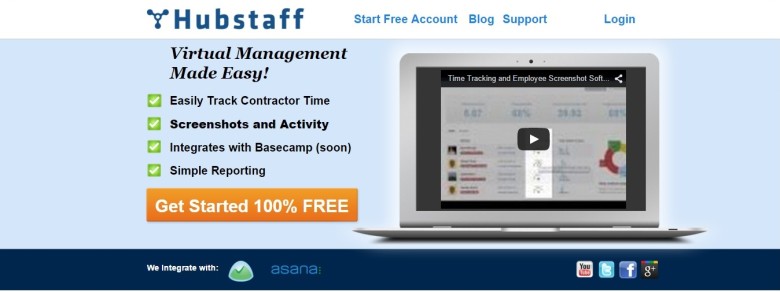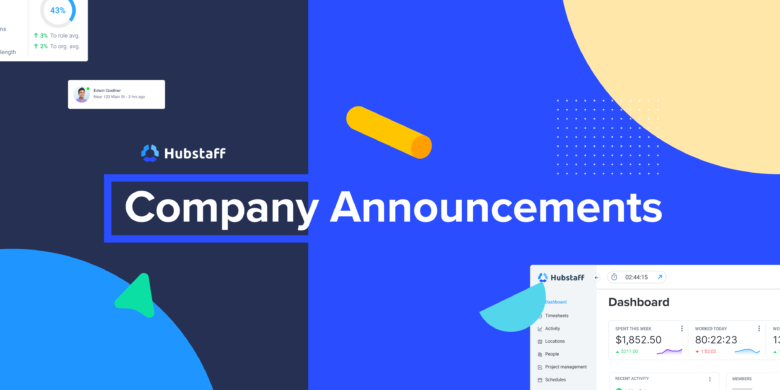SaaS growth is considerably harder to achieve than how the hundreds of success stories you might hear make it seem. The truth is that great software takes a ton of time and dedication to build, especially when bootstrapping.
For example, growing Hubstaff from a budding startup to one of the most popular time tracking solutions today was a long road full of questions about what we could do next and what we needed to grow our startup.
Pair that with the fact that Hubstaff is a complicated product with three desktop apps to support, and we need to be laser-focused on pumping out new features every single second.
That’s why we use third-party apps whenever we can
Because we are so product-focused, the last thing we want to spend our time on is building tools that already exist.
This decision seems obvious, but almost every product you try to integrate just doesn’t end up working quite right because of unforeseen limitations.
In addition, building your own tools usually puts marketing and development at odds.
Marketing wants to see a lot of reports, but development doesn’t have the time to build them. Marketing wants to include a lot of images, but development doesn’t want to store the images in the code base. The list goes on and on. For all those reasons and more, we try to use third-party apps as much as possible.
Boost your team’s efficiency with Hubstaff's productivity tools
Here are six SaaS tools that have helped Hubstaff grow
At Hubstaff, we use more than 20 SaaS tools. After trying what seemed like hundreds of products, what you read below is a list of six of the best SaaS tools for startups that have helped us grow into a successful business.
Hubstaff Tasks
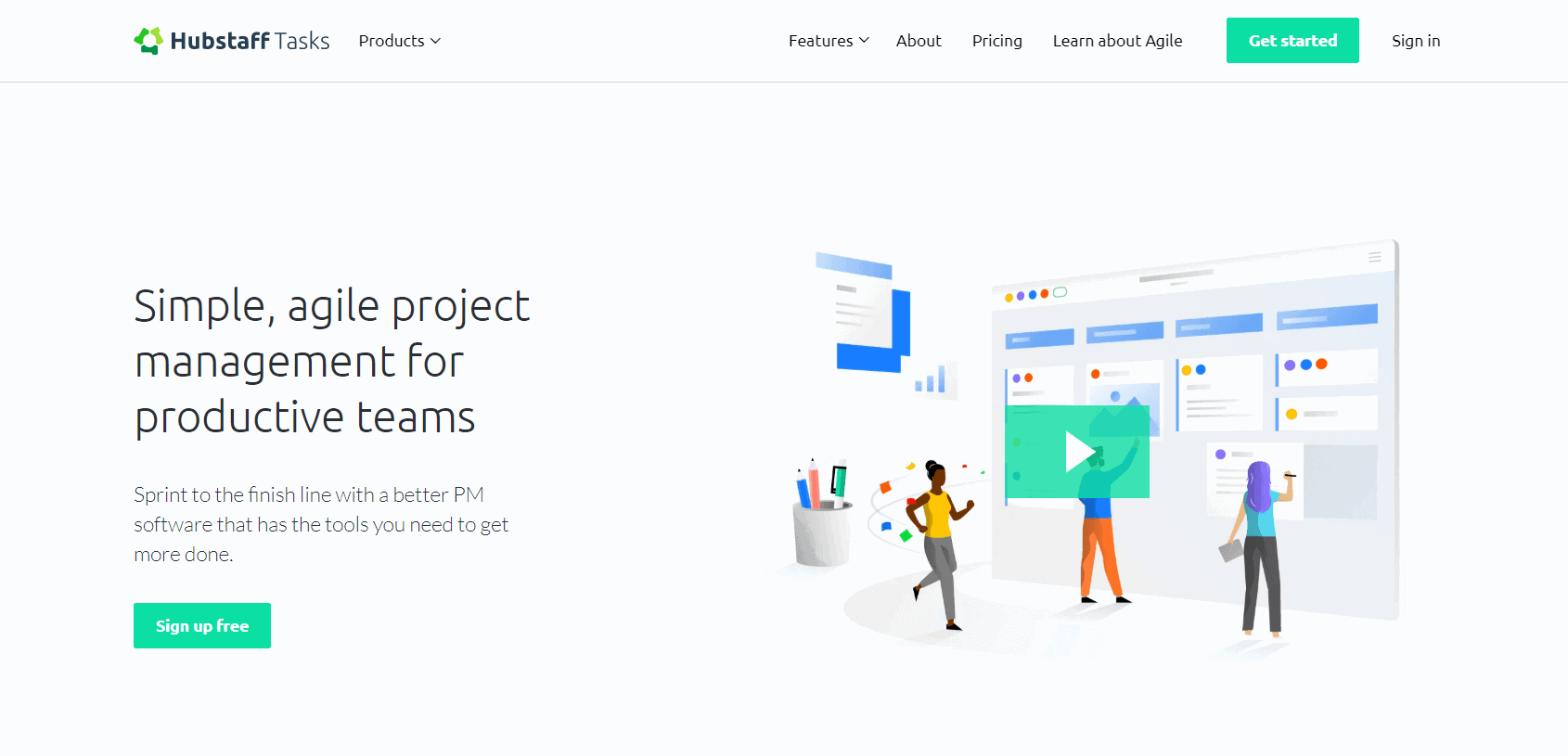
Having a good project management system in place is essential to nearly every business, and greatly helps in the earliest stages of growth. We use Hubstaff Tasks, our very own Agile project management tool.
We use it to keep track of project updates, assign tasks to our team members, and collaborate closely on a day-to-day basis. This is the primary platform on which our all-remote teams communicate with each other to get work done.
Hubstaff Tasks has a Kanban interface, making it extremely easy to navigate through even large projects. Each project is composed of multiple columns that are populated by Kanban cards that represent tasks.
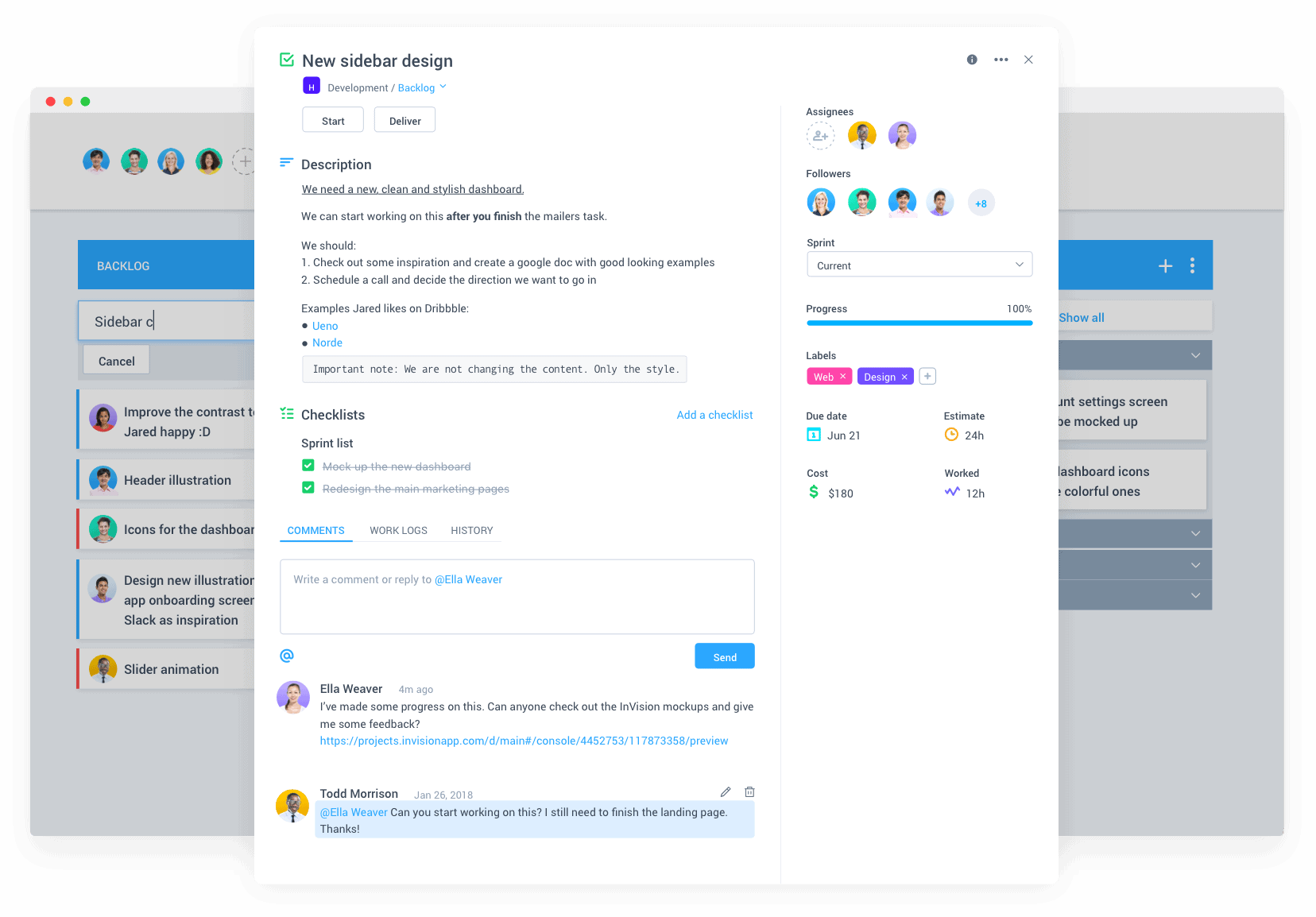
Each Kanban card contains a variety of information about the task. You can see a detailed description of the task, the people who are assigned to it, and task followers so everyone involved can stay updated. Hubstaff Tasks also lets you add labels for easier organization, create checklists and add labels, and tag teammates in comments to notify them.
We use Hubstaff Tasks’ Agile Sprints feature to focus on the most important tasks. This allows us to avoid deadlines with ease and finish tasks in an efficient manner.
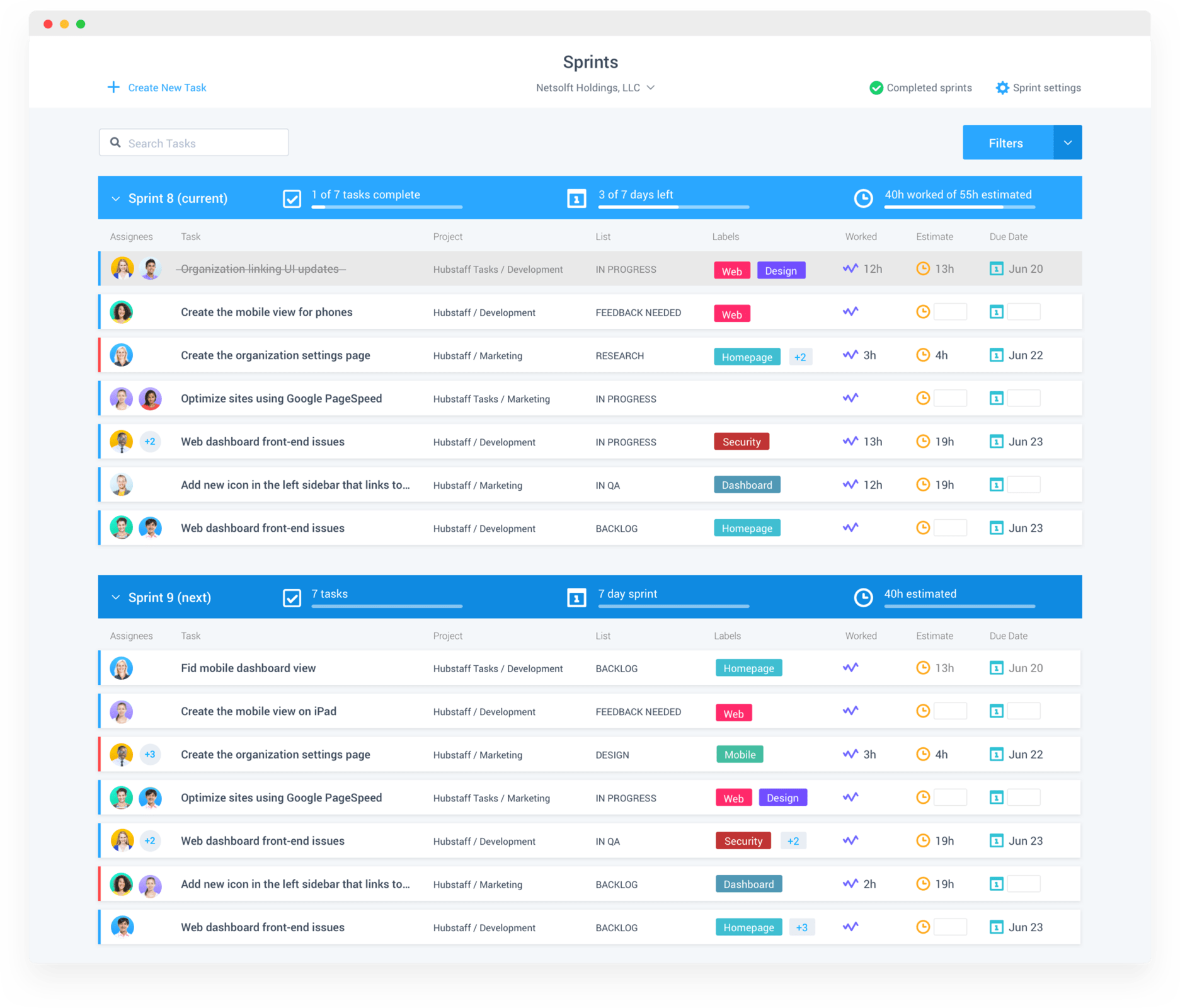
Since Hubstaff Tasks is built to work seamlessly with the Hubstaff time tracker, we’re able to utilize them together to achieve high levels of productivity.
Once the projects are set up in Hubstaff Tasks, we track time directly to them using the time tracking app. This allows us to concentrate on getting work done rather than constantly checking if we’re making any progress.
Visual Website Optimizer
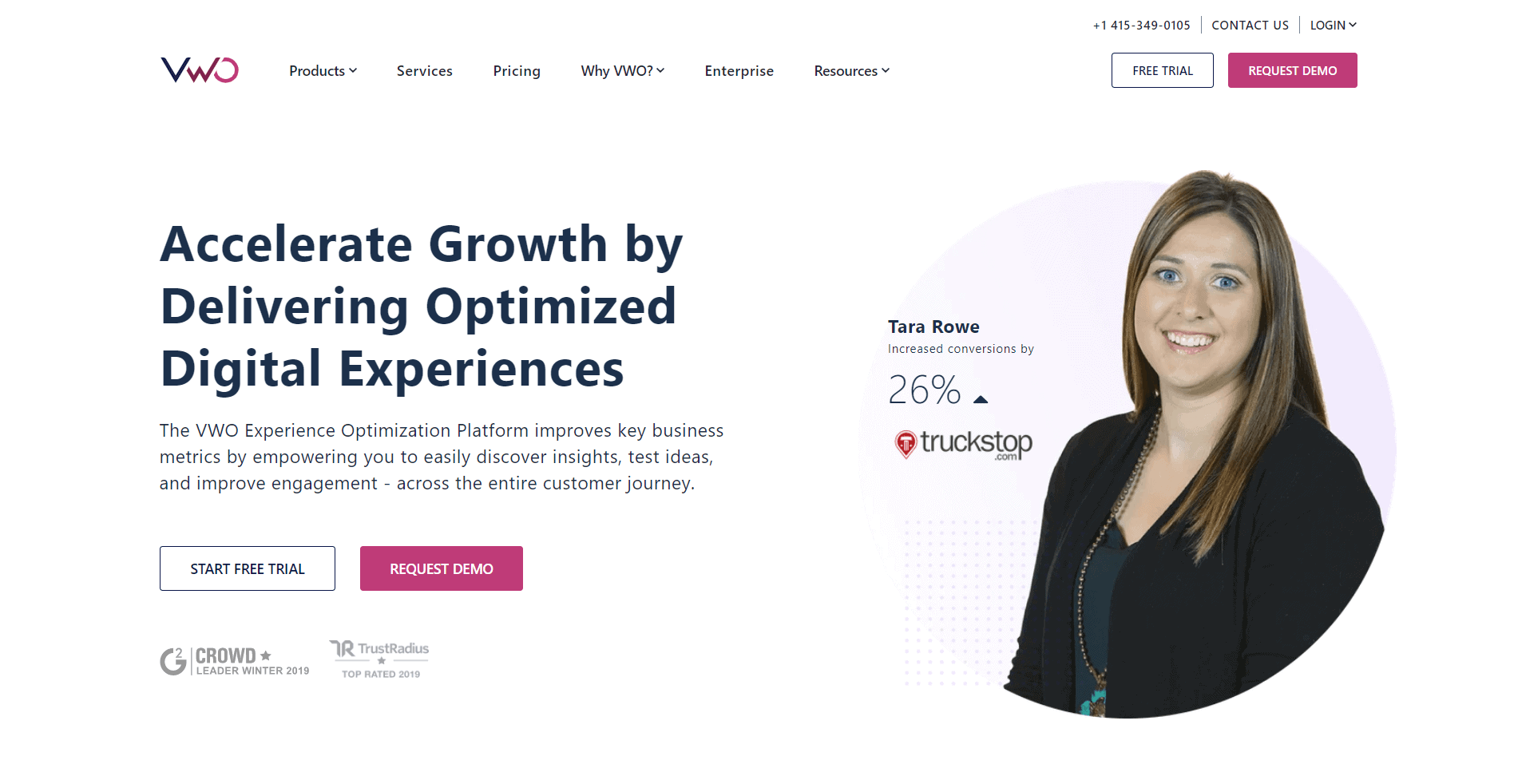
Visual Website Optimizer (VWO) allows us to test and improve our pages over time. One of our crucial marketing goals for Hubstaff is to continually improve each of our pages for increased conversions.
The following is an example of a simple multivariate test that we ran on a staffing page. In the image below, you see that 7 is the winning combination, converting at 23.33% vs. the control at 9.35%. So, obviously we are onto something that is working. We just doubled the response rate of a page, so let’s figure out what’s driving the positive change.
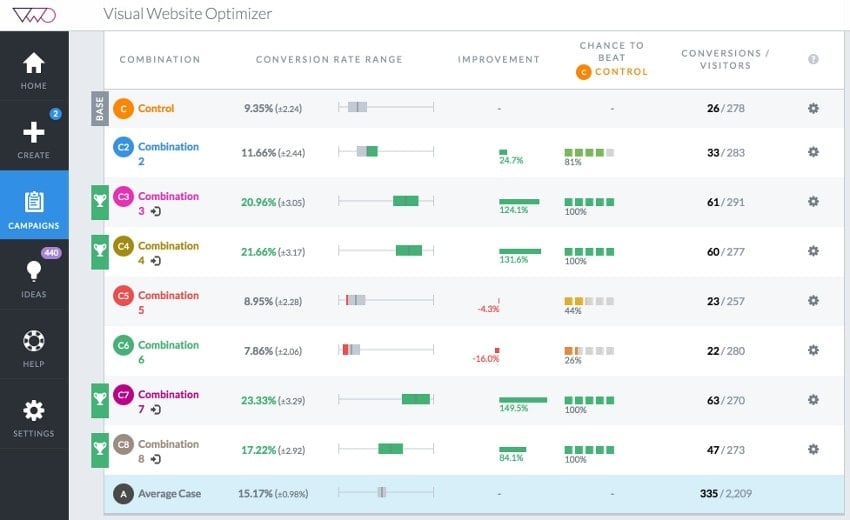
Above, you can see the combinations that were created based on three variations that I created to test. Now we can dig deeper to reveal that there was one specific change that accounted for most of the improvement.
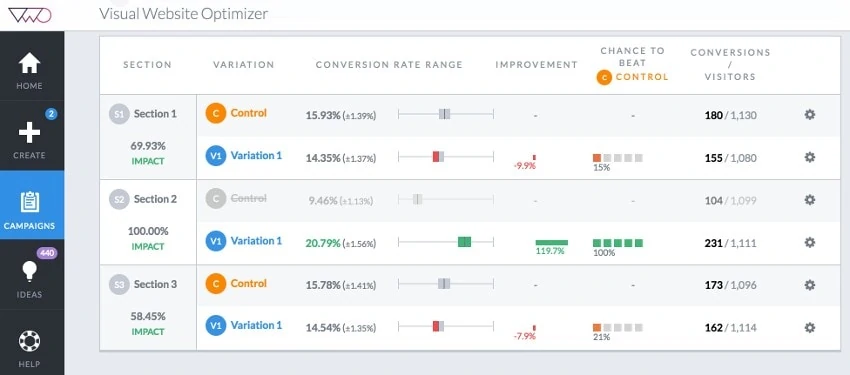
Based on the above, I was able to easily see that section 2 of the test was the driver of the positive results. Now all we have to do is review the tests that we created in Section 2.
In this case the improvement was just a simple text change of a button. The big red button now says, “Get Introduced to Contractors.” That’s the new version. The old version was, “Tell us about your project.” That one simple change produced a 149.5% increase in conversions.
ActiveCampaign
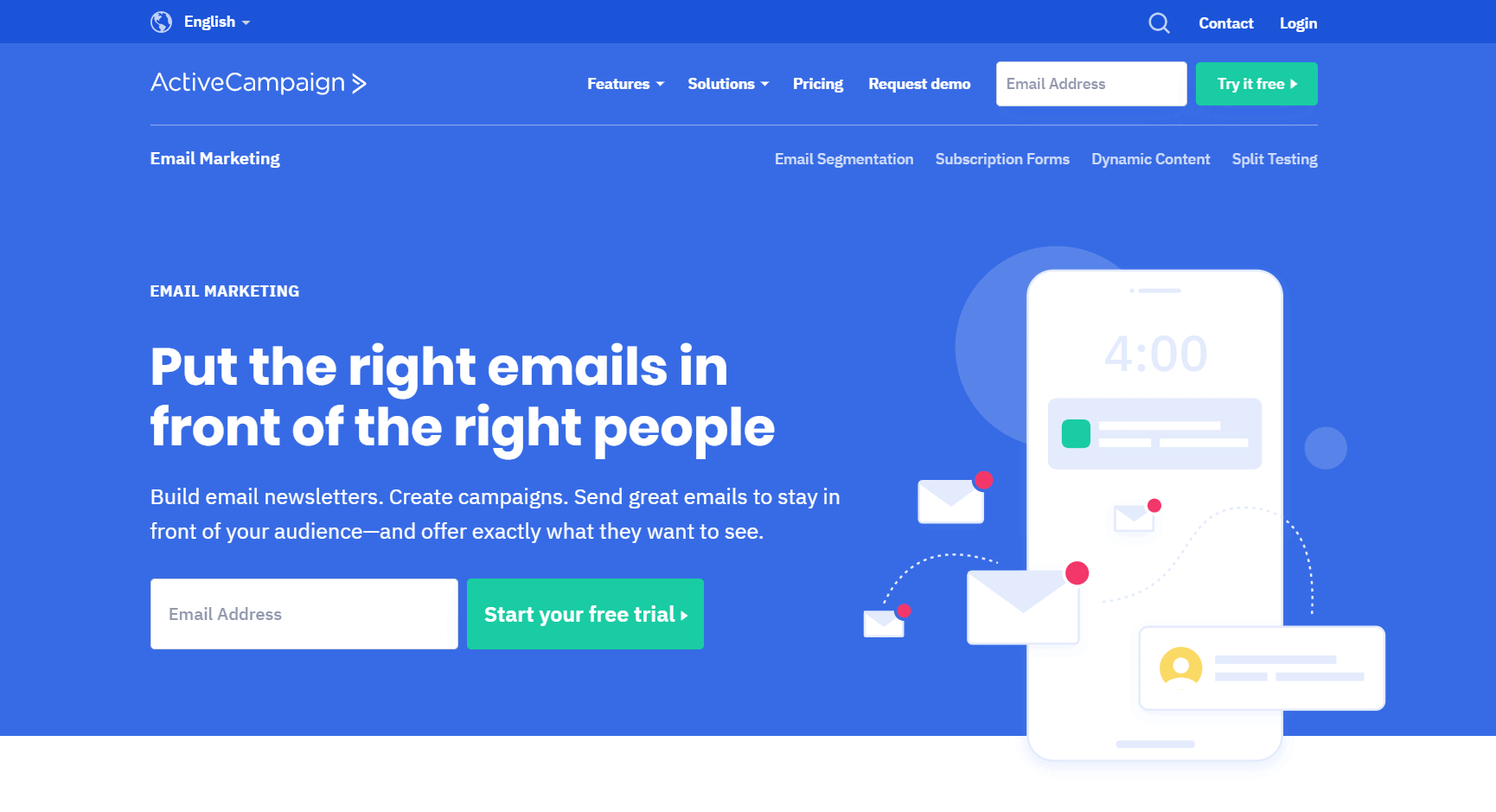
For SaaS companies, the room for error in marketing isn’t big. There will always be competitors, and in a lot of cases, the deciding factor of which product a customer would use is how the product is marketed to them, rather than the capabilities of the actual product itself.
That doesn’t mean that we’re not taking the development of Hubstaff seriously. We are dedicated in both product development and marketing, and we use ActiveCampaign for both.
ActiveCampaign lets us send emails to our customers and leads. It helps us create eye-catching emails and send them out to the right people at the right time. We run product updates and blog announcements through ActiveCampaign, and it’s brought us great results so far.
Subscribe to the Hubstaff blog for more SaaS tips
Baremetrics
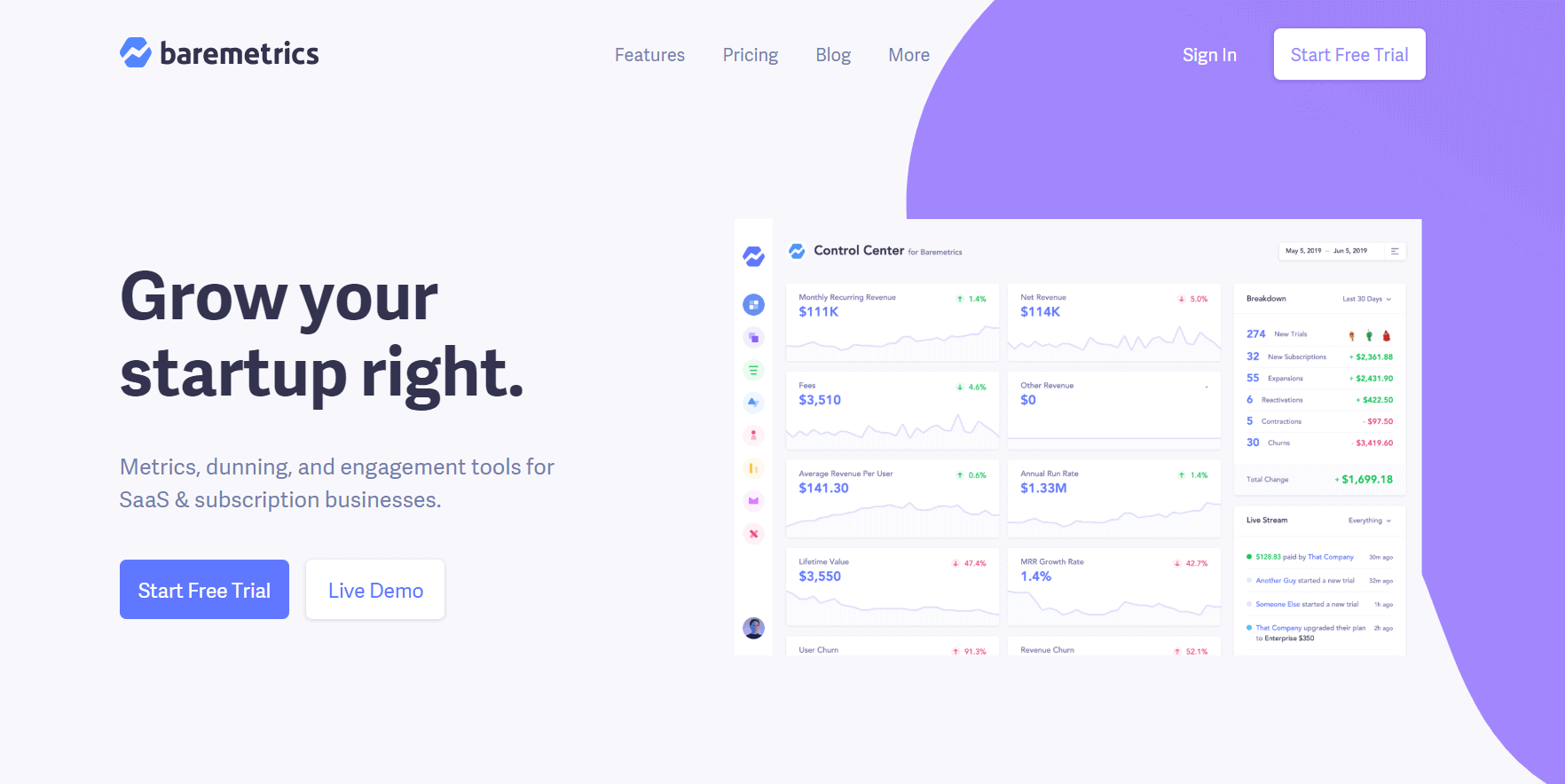
Baremetrics is a powerful SaaS reporting tool, and it’s the dashboard that we use for our metrics. Baremetrics includes a real time dashboard for payment failures, upgrades and new customers, so it provides a pulse for what’s going on with the business.
What’s cool about Baremetrics is that it integrates directly with Stripe (our payment processor), but it goes much further in terms of metrics than Stripe does. It calculates lifetime value, number of customers, shows upgrades, downgrades, and let’s us see all of this by date range.
Below you can see the MRR (monthly recurring revenue) for Hubstaff, and you can also see that in comparison with the past days, weeks, or months.
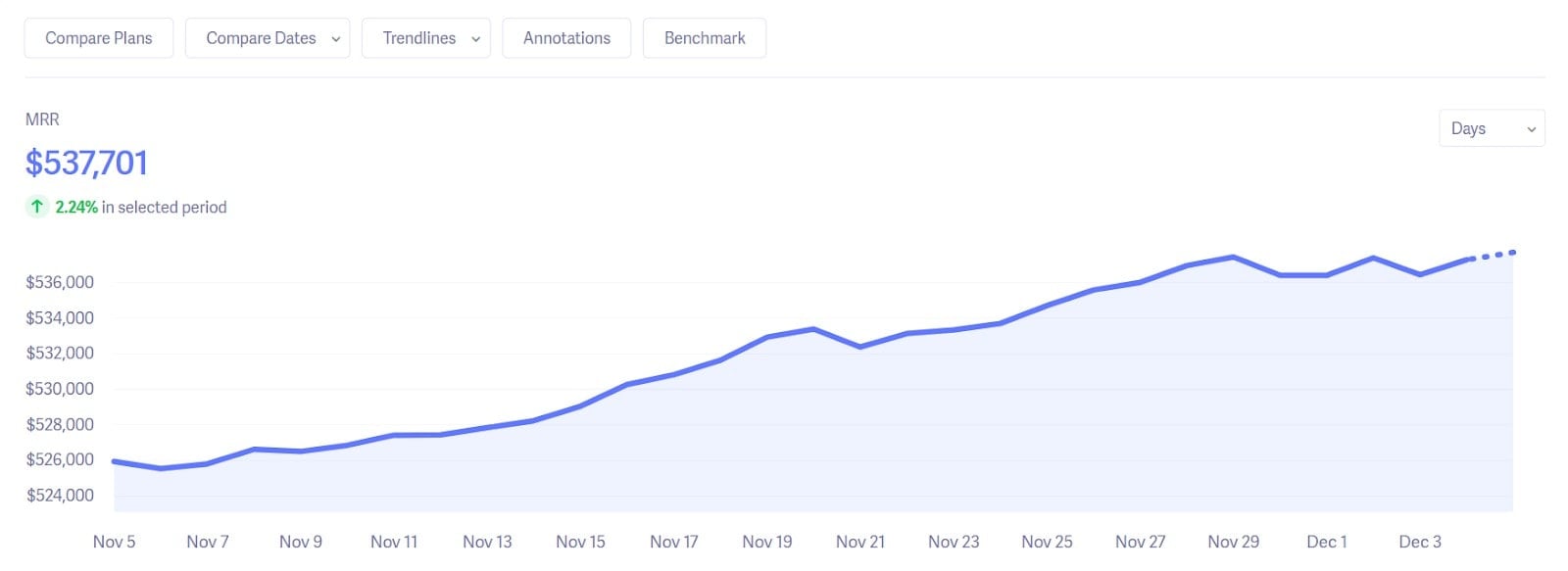
Below you can see the Baremetrics main dashboard. We use this to understand the path our business is on. By looking at user churn and upgrades versus downgrades we can understand how the business is performing and if there are major issues we need to investigate. It’s also like a daily challenge to get MRR up (we usually talk internally about MRR the most).

All of the Hubstaff metrics are public, so you can follow our progress in real time at hubstaff.baremetrics.com.
Zendesk
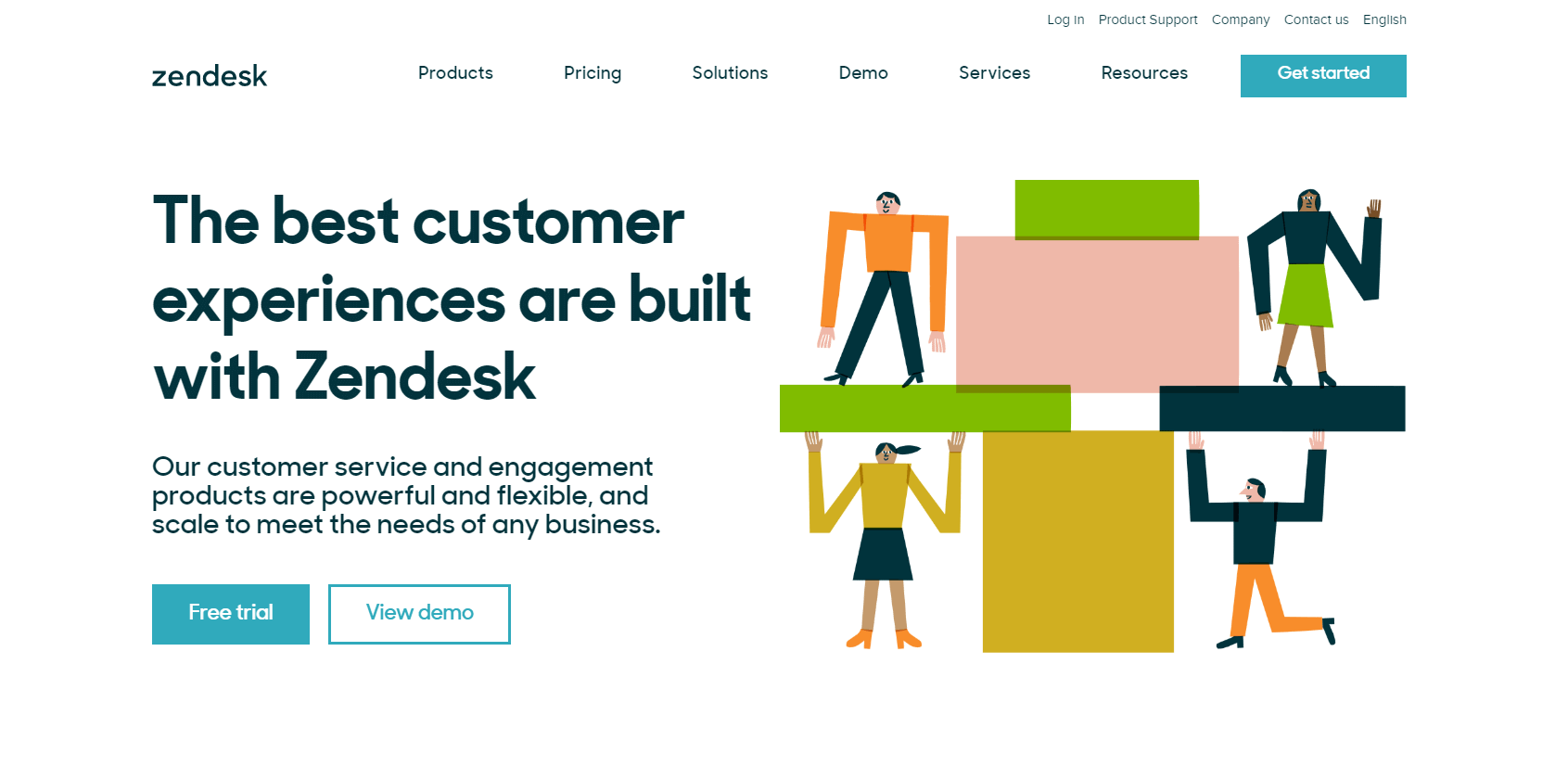
Communicating with the tens of thousands of customers that Hubstaff has is, by no means, an easy task. It’s so easy to lose track of a customer inquiry with the volume of messages we receive on a daily basis. Thankfully, we can count on Zendesk to make sure that we’re able to attend to every customer concern.
Zendesk has all the features you’ll need to run your customer support system effectively. It’s more than just a ticketing app — one of its most useful features is that you can start conversations through multiple channels. Zendesk lets our customer support team interact with customers through email, social, web, or mobile.
For SaaS companies, good customer support is one of the foundations of growth and success. Zendesk makes it possible for us to provide just that.
Woopra
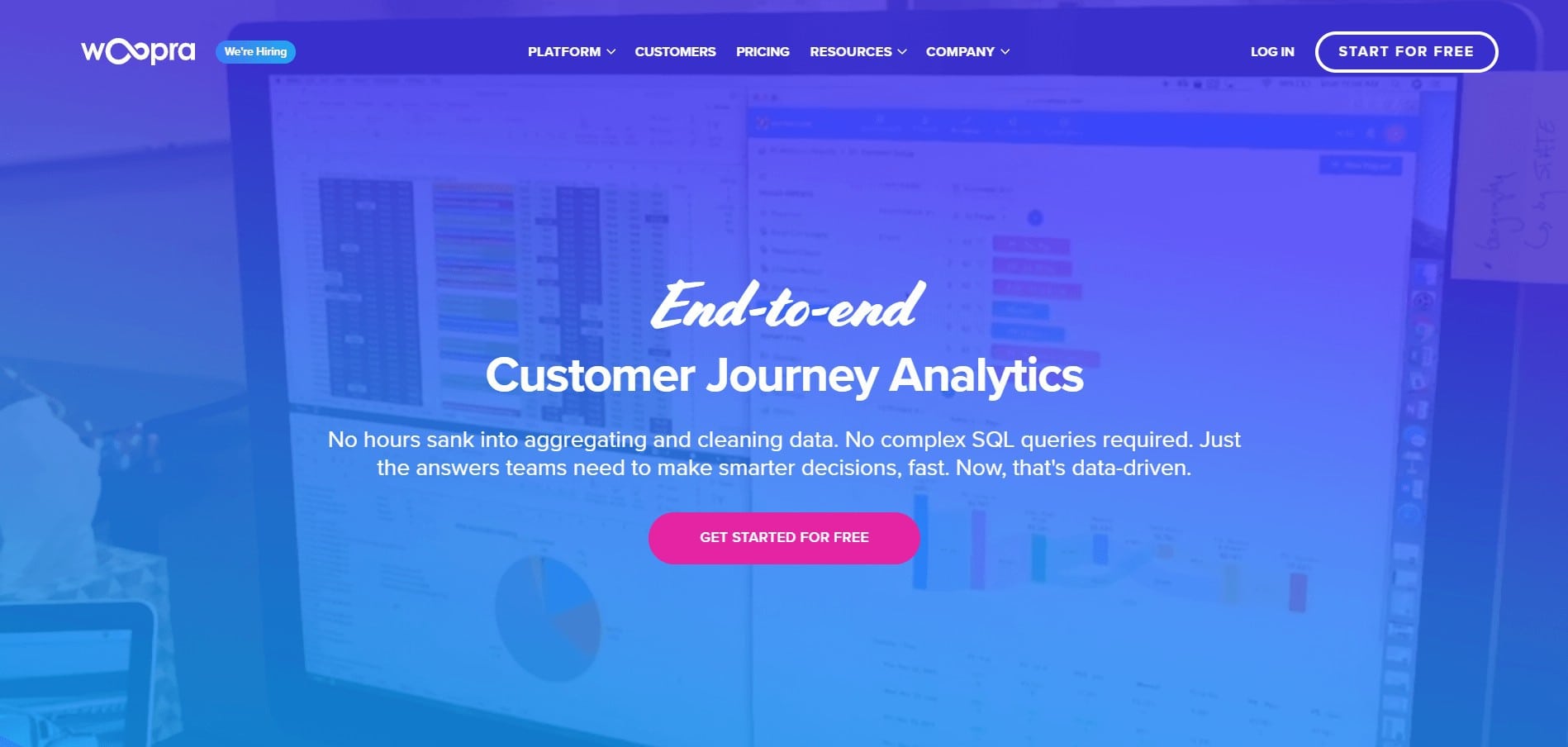
All SaaS companies have a ton of data and analytics to deal with, and the same goes for our team at Hubstaff. Woopra is definitely one of the best SaaS analytics tools out there. It has a powerful set of features that help us understand our customers better by analyzing their behavior. This helps us understand what processes we can improve upon in terms of keeping our customers loyal.
Woopra shows us a lot of information about our customers that would be totally impossible to acquire with just guesswork. For example, we can track which of our blog posts are getting the most traffic, and which CTAs are getting the most clicks.
The behavioral data that Woopra provides us allows us to create the right strategies for driving traffic to our website, and ultimately acquiring new customers.
The above tools are not an exhaustive list by any means, and in many cases there are very suitable replacements. The tools that we mentioned above are what we have found to work best for our business as we learn and grow.
If you have tools that you’d like to share, please submit them in the comments below. Tell us about how you use them and in what way it has helped your business.
Most popular
The Fundamentals of Employee Goal Setting
Employee goal setting is crucial for reaching broader business goals, but a lot of us struggle to know where to start. American...
Data-Driven Productivity with Hubstaff Insights: Webinar Recap
In our recent webinar, the product team provided a deep overview of the Hubstaff Insights add-on, a powerful productivity measurem...
The Critical Role of Employee Monitoring and Workplace Security
Why do we need employee monitoring and workplace security? Companies had to adapt fast when the world shifted to remote work...
15 Ways to Use AI in the Workforce
Whether through AI-powered project management, strategic planning, or simply automating simple admin work, we’ve seen a dramatic...

